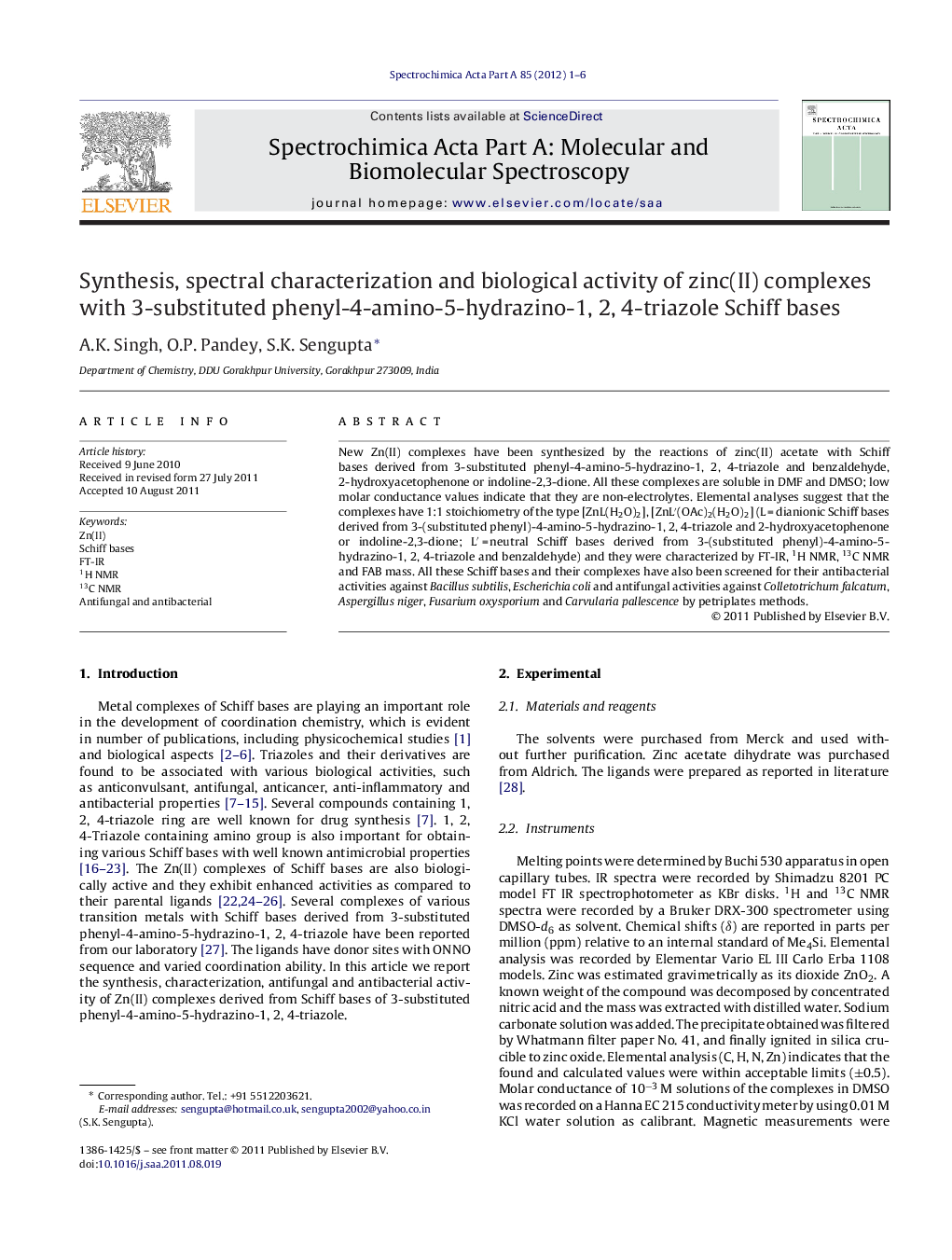| Article ID | Journal | Published Year | Pages | File Type |
|---|---|---|---|---|
| 1236058 | Spectrochimica Acta Part A: Molecular and Biomolecular Spectroscopy | 2012 | 6 Pages |
New Zn(II) complexes have been synthesized by the reactions of zinc(II) acetate with Schiff bases derived from 3-substituted phenyl-4-amino-5-hydrazino-1, 2, 4-triazole and benzaldehyde, 2-hydroxyacetophenone or indoline-2,3-dione. All these complexes are soluble in DMF and DMSO; low molar conductance values indicate that they are non-electrolytes. Elemental analyses suggest that the complexes have 1:1 stoichiometry of the type [ZnL(H2O)2], [ZnL′(OAc)2(H2O)2] (L = dianionic Schiff bases derived from 3-(substituted phenyl)-4-amino-5-hydrazino-1, 2, 4-triazole and 2-hydroxyacetophenone or indoline-2,3-dione; L′ = neutral Schiff bases derived from 3-(substituted phenyl)-4-amino-5-hydrazino-1, 2, 4-triazole and benzaldehyde) and they were characterized by FT-IR, 1H NMR, 13C NMR and FAB mass. All these Schiff bases and their complexes have also been screened for their antibacterial activities against Bacillus subtilis, Escherichia coli and antifungal activities against Colletotrichum falcatum, Aspergillus niger, Fusarium oxysporium and Carvularia pallescence by petriplates methods.
Graphical abstractZinc(II) complexes with 3-substituted phenyl-4-amino-5-hydrazino-1, 2, 4-triazole Schiff bases have been synthesized and characterized. Their microbial activities have been evaluated.Figure optionsDownload full-size imageDownload as PowerPoint slideHighlights► The zinc(II) complexes were synthesized by multi-step reactions and characterized. ► Zinc(II) complexes show significant antifungal and antibacterial activity. ► These zinc(II) complexes offer possibility for new type of economically affordable pesticides.
